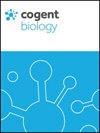Anatomical, morphological, and physiological changes in colchicine-treated protocorm-like bodies of Catasetum pileatum Rchb.f. in vitro
引用次数: 1
Abstract
Abstract Catasetum pileatum Rchb.f. is an important potting and cutting plant. This is the first report trying the polyploid induction in C. pileatum Rchb.f. Protocorm-like bodies (PLBs) explants of this orchid species were treated in vitro with different colchicine concentrations (0.00, 1.00, 2.00, 3.00, 4.00 and 5.00 mg l–1) and exposure time (24, 48 and 72 h) to induce polyploidy. Flow cytometry, chromosome counting (karyotype), and some anatomical, morphological, and physiological parameters were used to detect polyploidy induction. Treatment of 4.00 mg l–1 colchicine for 72 h resulted in a mixoploid plantlet. Results showed that none of the treatments induced tetraploidy or other levels of polyploidy, but changes in anatomical, morphological, and physiological parameters were observed. Differences in anatomical, morphological, and physiological parameters between treated plantlets were significant. The chromosome number detected by chromosome counting was 2 n = 2x = 54 in diploids. The largest size of stoma guard cells and maximum number of these cells was obtained in leaves of plantlets treated with 4.00 and 3.00 mg l–1 colchicine both for 72 h, respectively. The highest fresh and dry weights of plantlets and chlorophyll index in leaves was obtained in plantlets treated with 4.00 mg l–1 colchicine for 48 h. Average survival rates from treatments were greater than 90%.秋水仙碱处理的柱状Catasetum Rchb.f原球茎的解剖学、形态学和生理学变化
摘要毛白杨是一种重要的盆栽和扦插植物。这是首次尝试在C.pilatum Rchb.f中诱导多倍体的报道。用不同浓度的秋水仙碱(0.00、1.00、2.00、3.00、4.00和5.00 mg l–1)和暴露时间(24、48和72小时)在体外处理该兰花种的原球茎样体(PLBs)外植体以诱导多倍体。流式细胞术、染色体计数(核型)以及一些解剖学、形态学和生理学参数用于检测多倍体诱导。4.00 mg l–1秋水仙碱处理72小时,产生混合多倍体植株。结果表明,没有一种处理诱导四倍体或其他水平的多倍体,但观察到解剖、形态和生理参数的变化。处理后的植株在解剖、形态和生理参数方面存在显著差异。染色体计数检测二倍体染色体数目为2n=2x=54。在分别用4.00和3.00 mg l–1秋水仙碱处理72小时的植株叶片中,获得了最大尺寸的气孔保护细胞和最大数量的这些细胞。在用4.00 mg l–1秋水仙碱处理48小时的植株中,获得了最高的植株鲜重和干重以及叶片中的叶绿素指数。处理的平均存活率大于90%。
本文章由计算机程序翻译,如有差异,请以英文原文为准。
求助全文
约1分钟内获得全文
求助全文

 求助内容:
求助内容: 应助结果提醒方式:
应助结果提醒方式:


